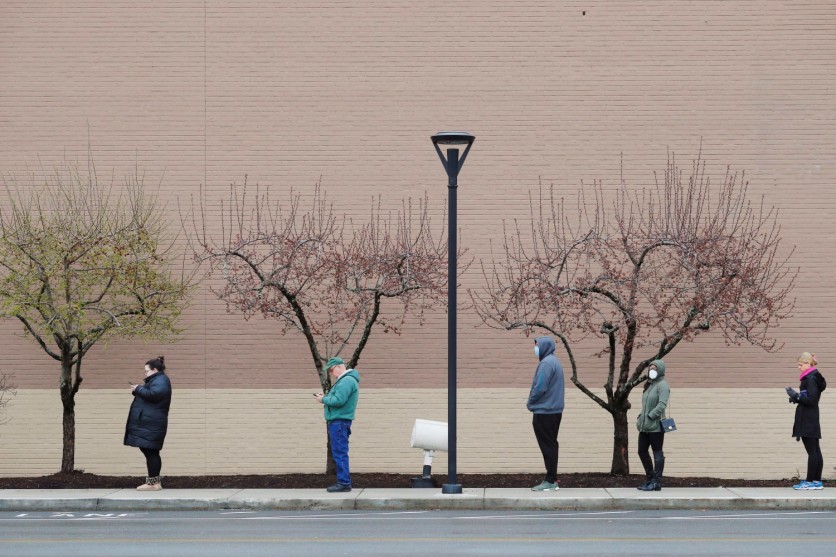Shocking new data reveals hidden coronavirus hotspots in rural components of the United States, which might be among some of the hardest-hit regions of the country. The county-level map showing COVID-19 infections, produced by the University of Chicago, indicates a demanding trend of quick escalating rural cases.

The researchers' findings reveal full-size clusters in components of Georgia, Arkansas, and Mississippi, among other areas. Even although the concerned populations may be smaller than those of New York or Seattle, they will be disproportionately hit through the disease.
The smaller the population, the greater the coronavirus cases
Scientists said there are a lot of areas in the South where the population is a lot smaller, but the proportion of people who have COVID-19 is a lot greater.
"When you flip from just state-level data to county-level data, you get a lot more information," says Marynia Kolak, assistant director of health informatics at the University of Chicago, told the Scientific American.
Kolak, who co-led the team that created the maps, said there are more potential challenges on the other side of the coin. She explained there are also correspondingly fewer hospital beds, intensive care units, or ventilators, even though there are fewer people who have the virus.
The mapping group used data from a crowd-sourced tracker of county-stage cases and confirmed the estimates from state health departments. The researchers have seen that incorporated facts from numerous other sources, and they are partnering with their colleagues at the University of Wisconsin-Madison to authenticate that data.
The information displays some sudden trends in infection rate country-wide after adjusting for populace size. Many county clusters-which include those round Albany, Ga., Detroit, Nashville, Tenn., and parts of Mississippi and Arkansas-had vast numbers of cases per capita.
Researchers claim that New York State, New Jersey, and Massachusetts still had the most confirmed infections, both universal and per capita: 76,273 cases, or approximately 22 per 10,000 people. Yet Albany, Ga., had the second-highest rate per capita: 13 cases per 10,000 people. That figure is much higher than those of other famous hotspots, which include Seattle, which had about eight cases per 10,000, and San Francisco, which had two per 100,000.
"The big [outbreaks] that I was expecting to see, like Seattle or New York, I didn't realize how widespread they were," Kolak says. Seattle, for example, stretches out to roughly half of Washington State.
Many of those more rural counties have had a fewer death rate, as compared with large towns together with New York or Seattle, but with a higher fatality rate. The New York-New Jersey-Massachusetts area, had a fatality rate of 1.4 percent, compared to Albany in Georgia, with 7.65 percent.
In numerous areas, hospital intensive care units are already achieving their capacities, Kolak says. Not only these locations have fewer sources, but DailyMail reported lots of these areas are also in states that have no longer include health insurance for coronavirus. Hence, residents already have much less access to lower health care.
Also, the researchers said many people in the rural, southern parts of the country are older and have underlying health conditions. Both age and health conditions have been related to more lethal COVID-19 infections.
Coronavirus rate speed a problem
Another issue is the rate of spread. Health authorities might be less alarmed about a reasonably small hotspot if this contamination becomes a slowly growing persistent one, along with coronary heart disease. But because the new coronavirus is tremendously contagious and spreads so rapidly, the numbers can increase very quickly.
Given the lack of testing capacity in the U.S., some areas clearly may not understand the volume of their outbreaks. New York State has been checking out quite aggressively. Smaller state clusters, however, might also lack the sources to do so.
Kolak recognizes that the team is only basing things on the confirmed cases. However, comparing the numbers in those hotspots with the surrounding regions does offer an experience of the outbreaks' relative severity. The team has begun working with different research businesses to validate the accuracy of its data, Kolak says. And the following step will be collaborating with state health agencies to determine what information could be most useful to them.
The new findings ought to have critical implications for controlling the spread of the virus. One of the principle take-home messages, Kolak says, is the importance of social distancing and isolating each outbreak earlier than it gets more serious.
"Rather than wait for it to get so extreme that, you know, the whole state emerges as a hotspot," she says, "try to contain it within a county before it goes further."




